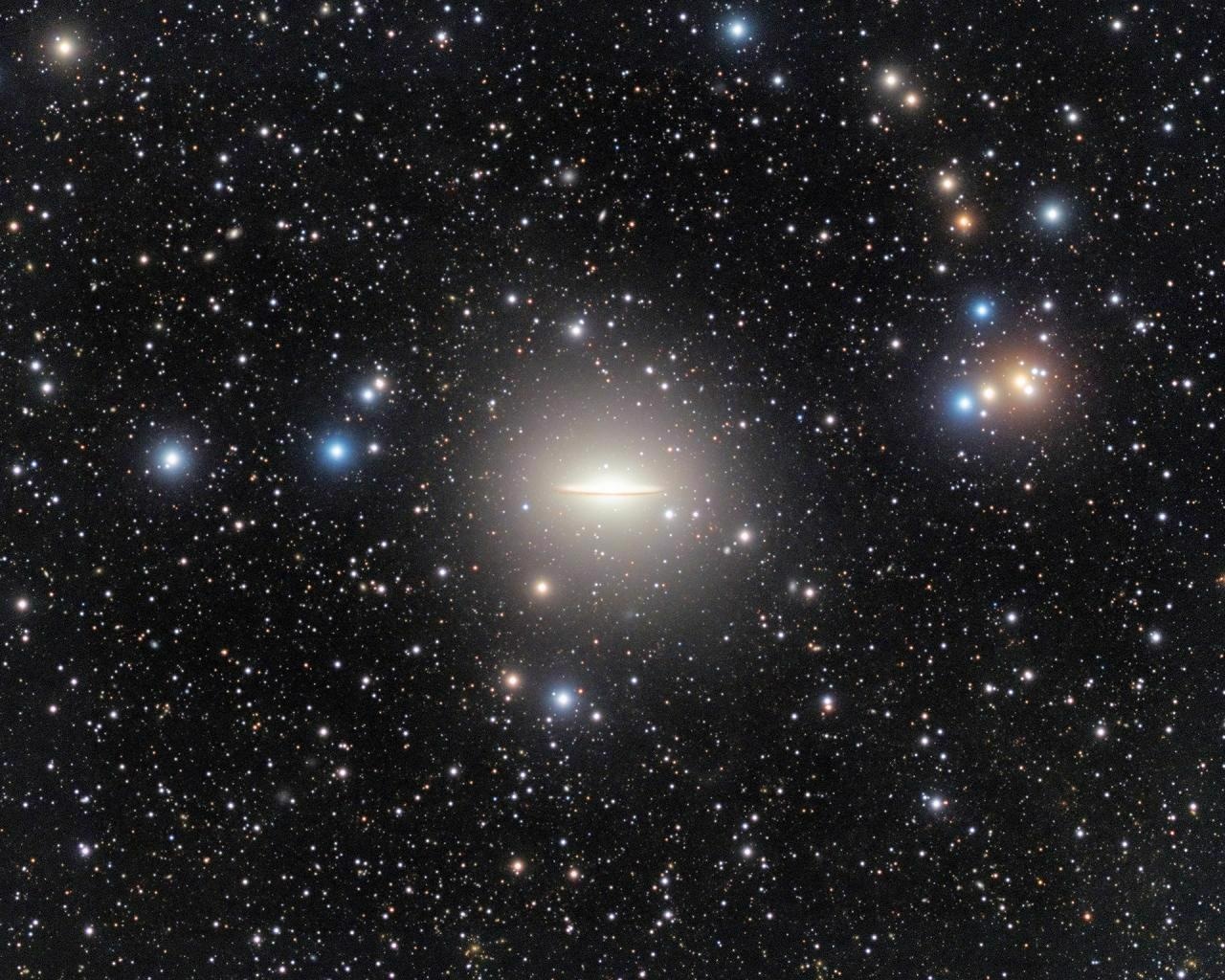As per the new cosmological models, huge spiral galaxies like the Milky Way expanded by absorbing smaller galaxies, by a kind of galactic cannibalism.

Sombrero galaxy (M104). Image Credit: Manuel Jiménez/Giuseppe Donatiello.
Very large structures, called the tidal stellar streams, provide proof for this as remnants of such satellite galaxies are noted around them. However, in most cases, it is challenging to study the complete histories, since these flows of stars are very faint, and only the remnants of the latest mergers have been identified.
A new study headed by the Instituto de Astrofísica de Andalucía (IAA-CSIC), with the contribution from the Instituto de Astrofísica de Canarias (IAC), has offered elaborate observations of a huge tidal flow near the Sombrero galaxy, whose weird morphology is yet to be explained.
The study findings were reported recently in the journal Monthly Notices of the Royal Astronomical Society (MNRAS).
The Sombrero galaxy, also called Messier 104, is a galaxy situated nearly 30 million light-years away. This is a part of the Local Supercluster (a group of galaxies consisting of the Virgo cluster and the Local Group including the Milky Way).
Approximately, the Supercluster measures around one-third of the diameter of the Milky Way and exhibits features of both of the dominant types of galaxies present in the Universe, the ellipticals and the spirals. It features spiral arms and has a very large bright central bulge, making it appear like a hybrid of the two kinds.
Our motive for obtaining these very deep images of the Sombrero galaxy (Messier 104) was to look for the remains of its merger with a very massive galaxy. This possible collision was recently suggested on the basis of studies of the stellar population of its strange halo obtained with the Hubble Space Telescope.
David Martínez-Delgado, Study First Author and Researcher, Instituto de Astrofísica de Andalucía
Observations by the Hubble in 2020 revealed that the halo, which is a comprehensive and faint region encircling the Sombrero galaxy, consists of several stars that are rich in metals and elements heavier compared to hydrogen and helium.
This is considered as a feature typical of new generations of stars, which are generally discovered in the disks of galaxies and are very uncommon in galactic halos which are inhabited by old stars.
To describe their existence, astronomers proposed what is called “a wet merger”, a scenario where a huge elliptical galaxy is rejuvenated by huge quantities of gas and dust from a different massive galaxy, which went into the development of the disk which is now observed.
In our images we have not found any evidence to support this hypothesis, although we cannot rule out that it could have happened several thousand million years ago, and the debris is completely dissipated by now.
David Martínez-Delgado, Study First Author and Researcher, Instituto de Astrofísica de Andalucía
“In our search we have in fact been able to trace for the first time the complete tidal stream which surrounds the disc of this galaxy, and our theoretical simulations have let us reconstruct its formation in the last three thousand million years, by cannibalism of a satellite dwarf galaxy,” added Martínez-Delgado.
“Observational techniques in present day Astrophysics need advanced image processing. Our modeling of the bright stars around the Sombrero galaxy, and at the same time of the halo light of the galaxy itself has enabled us to unveil the nature of this tidal stream. It is remarkable that thanks to these advanced photometric techniques we have been able to do front line science with a Messier object using only an 18 cm (diameter) telescope,” stated Javier Román, study co-author and postdoctoral researcher at the IAC.
The researchers negate the concept that the huge stellar tidal stream, known for over 30 years, could be associated with the event that generated the strange morphology of the Sombrero galaxy which, if it was caused by a wet merger, would require the interaction of two galaxies with huge masses.
This study has been possible as a result of the collaboration between professional and amateur astronomers.
We have collaborated with the Spanish astrophotographer Manuel Jiménez, who took the images with a robotic telescope of 18 centimeter diameter, and the well-known Australian astrophotographer David Malin, who discovered this tidal stream on photographic plates taken in the 90’s of the last century.
David Martínez-Delgado, Study First Author and Researcher, Instituto de Astrofísica de Andalucía
“This collaboration shows the potential of amateur telescopes to take deep images of nearby galaxies which give important clues about the process of their assembly which is continuing until the present epoch,” concluded Martínez-Delgado.
Journal Reference:
Martínez-Delgado, D., et al. (2021) A feather on the hat: Tracing the giant stellar stream around the Sombrero galaxy. Monthly Notices of the Royal Astronomical Society. doi.org/10.1093/mnras/stab1874.